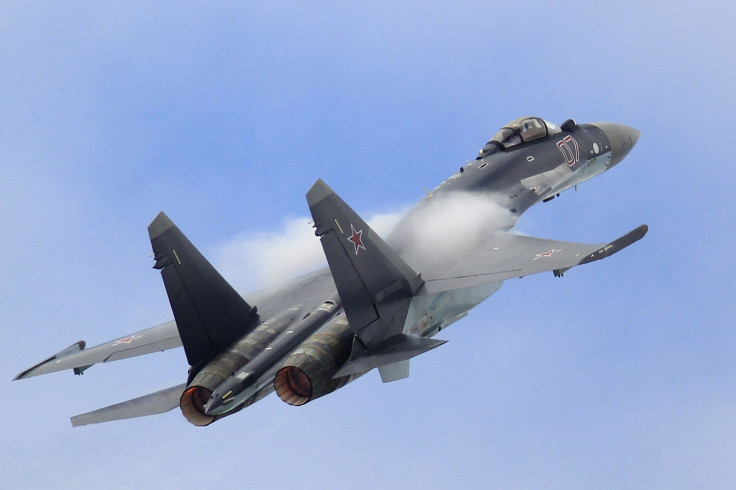China Russia Defense Deal: Beijing Inks $2 Billion Contract With Moscow For Su-35 Fighter Jets

The Chinese military has become the first foreign customer for Russia's Su-35 fighter jet, after signing a $2 billion contract Thursday for 24 of the fourth-generation warplanes. Coming in at around $85 million apiece, the deal is a good value for Beijing, which had previously struggled to develop aircraft that can compete with superior European and U.S. designs.
"Closed talks between representatives of China and Russia were held on Sunday in Komsomolsk-on-Amur," said Rostec Sergey Chemezov, director general of the Russian high-technology state corporation, according to a Thursday report from the Russian news site Tass. "China has officially become the first foreign contractor of the Su-35 aircraft. The contract has no precedents in the history of military aircraft deliveries."
China and Russia had been in negotiations for several years over the purchase, even while China attempted to design its own fourth-generation fighters, and allegedly hacked top secret designs of the U.S-built F-35 Joint Strike Fighter. China denies stealing the Lockheed Martin plans, according to CNN.
The Su-35 is a long-range fourth-generation fighter capable of flying a speed up to 2,500 kilometers per hour. It's comparable to the F/A-18 Hornet aircraft built by Boeing or General Dynamics' F-16 Fighting Falcon. The U.S.-built F-22 and F-35 are both examples of fifth generation fighter jets and are the only mass-produced working examples.
The major difference between the two generations is the superior stealth capabilities and the intelligence of the onboard sensors that allow the aircraft to make more complex calculations using elements of artificial intelligence.
The deal also underlines and strengthens the close ties shared by Moscow and Beijing, who are both being condemned by the European Union and U.S. over actions in Syria, Ukraine and the South China Sea.
Specifically, the EU and the U.S. have clashed with Russia over its annexation of Crimea last year and its continued involvement in the east Ukraine conflict. Adding to that, Washington, D.C. has been critical of Russia's now advanced role in the fight against the Islamic State group in Syria, while also confronting China over what it describes as illegal claims to large areas of sea territory and islands in the South China Sea.
© Copyright IBTimes 2025. All rights reserved.






















